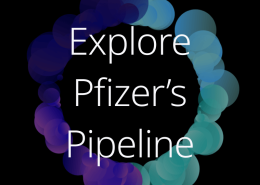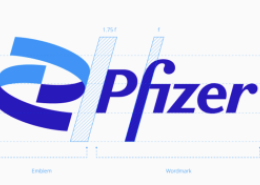Pfizer Receives FDA Approval for MYLOTARG™ (gemtuzumab ozogamicin)
Only approved antibody-drug conjugate for newly diagnosed and relapsed or refractory CD33-positive acute myeloid leukemia Reintroduction of MYLOTARG supported by continued research by the AML community demonstrating favorable risk:benefit profile
Pfizer Inc. (NYSE:PFE) today announced that the U.S. Food and Drug Administration approved MYLOTARG™ (gemtuzumab ozogamicin) for adults with newly diagnosed CD33-positive acute myeloid leukemia (AML), and adults and children 2 years and older with relapsed or refractory CD33-positive AML.1 MYLOTARG is the first therapy with an indication that includes pediatric AML. It is also the only AML therapy that targets CD33, an antigen expressed on AML cells in up to 90% of patients.
“The FDA approval of MYLOTARG fills a critical unmet need for many adults and children with AML, which can be fatal in a matter of months or even weeks if not treated and has a high relapse rate,” said Liz Barrett, global president, Pfizer Oncology. “Based on clinical data, real-world experience and support from the AML community, we are grateful MYLOTARG now has the potential to help a broad range of AML patients.”
MYLOTARG was originally approved in 2000 at a higher dose under the FDA’s accelerated approval program for use as a single agent in patients with CD33-positive AML who had experienced their first relapse and were 60 years or older and who were not considered candidates for other cytotoxic chemotherapy. In 2010, Pfizer voluntarily withdrew MYLOTARG in the U.S. after a confirmatory trial failed to show clinical benefit and there was a higher rate of fatal toxicity compared to chemotherapy. MYLOTARG has remained on the market in Japan and has been available to individual patients through Pfizer’s compassionate use programs. Due to the critical unmet need for patients with AML, there remained great interest among AML clinicians to evaluate MYLOTARG using different doses and different schedules. These independent investigators, with Pfizer’s support, conducted clinical trials that yielded more information on the efficacy and safety of MYLOTARG.
“Today is an important day for patients, their families and the entire AML community, as the approval of MYLOTARG brings forth a long-awaited treatment option that may lead to deeper, more durable remissions for patients with AML,” said Jorge Cortes, MD, University of Texas, MD Anderson Cancer Center. “After many years, we are finally seeing progress in the treatment of AML, which has renewed my hope in improving outcomes for my patients. I am pleased that I can now offer many adult and pediatric patients targeted treatment with MYLOTARG.”
Today’s approval of MYLOTARG is based on several investigator-led clinical trials, including ALFA-0701, AML-19 and MyloFrance-1.1
The ALFA-0701 trial was a Phase 3, multicenter, randomized, open-label study of 271 patients with newly-diagnosed de novo AML, using a new, lower fractionated dose of MYLOTARG. Patients received MYLOTARG 3 mg/m2 on days 1, 4 and 7 in combination with conventional chemotherapy or chemotherapy alone. The primary endpoint was event-free survival (EFS). Administering MYLOTARG (n=135) in addition to standard induction chemotherapy resulted in a significant improvement in EFS compared with chemotherapy alone (n=136) in patients with newly diagnosed AML. Event-free survival was 17.3 months for patients receiving MYLOTARG compared with 9.5 months for those receiving chemotherapy alone (HR = 0.56 [95% CI: (0.42, 0.76)]).1
Study AML-19 was a multicenter, randomized, open-label Phase 3 study comparing single agent MYLOTARG (n=118) to best supportive care (n=119) for elderly patients who could not tolerate other AML therapies. As initial treatment, patients received MYLOTARG 6 mg/m2 on day 1 and MYLOTARG 3 mg/m2 on day 8. As continued treatment, patients without evidence of disease progression received MYLOTARG 2 mg/m2 on day 1 every 4 weeks. The efficacy of MYLOTARG was established on the basis of a significant improvement in overall survival (OS). Median OS was 4.9 months for patients receiving MYLOTARG compared with 3.6 months for patients receiving best supportive care (HR=0.69 [95% CI: 0.53-0.90] [2-sided p=0.005]).1
MyloFrance-1 was a Phase 2, single-arm, open-label study of 57 adult patients in first relapse. Patients received single agent MYLOTARG 3mg/m2 on days 1, 4 and 7. The efficacy of MYLOTARG was established on the basis of complete remission (CR) rate and duration of remission. In the trial, 15 (26%; 95% CI: 16%-40%) patients achieved a complete remission (CR) and median relapse-free survival (RFS) was 11.6 months.1
The U.S. labeling for MYLOTARG includes a boxed warning for hepatotoxicity, including severe or fatal hepatic veno-occlusive disease (VOD). Veno-occlusive disease has been reported in association with the use of MYLOTARG as a single agent and as part of a combination chemotherapy regimen (5%). In patients who received MYLOTARG, the most common (≥15%) adverse reactions were hemorrhage, infection, fever, nausea, vomiting, constipation, headache, increased ALT, increased AST, rash and mucositis.
Pfizer is committed to helping patients gain access to Pfizer medicines, including MYLOTARG, and related educational tools, resources and services, regardless of their financial or health insurance status through the company’s patient assistance programs. Patients can visit www.MYLOTARG.com or call 1-877-744-5675 to learn more.
The full prescribing information, including BOXED WARNING, for MYLOTARG can be found here: https://www.accessdata.fda.gov/drugsatfda_docs/label/2017/761060lbl.pdf
IMPORTANT MYLOTARG™ (gemtuzumab ozogamicin) SAFETY INFORMATION FROM THE U.S. PRESCRIBING INFORMATION
WARNING: Hepatotoxicity, including severe or fatal hepatic veno-occlusive disease (VOD), also known as sinusoidal obstruction syndrome (SOS), has been reported in association with the use of MYLOTARG as a single agent, and as part of a combination chemotherapy regimen. Monitor frequently for signs and symptoms of VOD after treatment with MYLOTARG.
Hepatotoxicity,Including Veno-occlusive Liver Disease (VOD): An increased risk of VOD was observed in patients with moderate/severe hepatic impairment and patients who received MYLOTARG either before or after HSCT. Assess ALT, AST, total bilirubin, and alkaline phosphatase prior to each dose of MYLOTARG. After treatment with MYLOTARG, monitor frequently for signs and symptoms of VOD; these may include elevations in ALT, AST, and total bilirubin, hepatomegaly, rapid weight gain, and ascites. Monitoring only total bilirubin may not identify all patients at risk of VOD. For patients who develop abnormal liver tests, more frequent monitoring of liver tests and clinical signs and symptoms of hepatotoxicity is recommended. For patients who proceed to HSCT, monitor liver tests frequently during the post-HSCT period, as appropriate. Manage signs or symptoms of hepatic toxicity by dose interruption or discontinuation of MYLOTARG. In patients who experience VOD, discontinue MYLOTARG and treat according to standard medical practice.
Infusion-Related Reactions (Including Anaphylaxis): Life-threatening or fatal infusion-related reactions can occur during or within 24 hours following infusion of MYLOTARG. Signs and symptoms of infusion-related reactions may include fever, chills, hypotension, tachycardia, hypoxia, and respiratory failure. Premedicate prior to MYLOTARG infusion. Monitor vital signs frequently during infusion. Interrupt infusion immediately for patients who develop evidence of infusion reaction, especially dyspnea, bronchospasm, or hypotension. Monitor patients during and for at least 1 hour after the end of the infusion or until signs and symptoms completely resolve. Discontinue use of MYLOTARG in patients who develop signs or symptoms of anaphylaxis, including severe respiratory symptoms or clinically significant hypotension.
Hemorrhage: MYLOTARG is myelosuppressive and can cause fatal or life-threatening hemorrhage due to prolonged thrombocytopenia. Assess blood counts prior to each dose of MYLOTARG and monitor blood counts frequently after treatment with MYLOTARG until resolution of cytopenias. Monitor patients for signs and symptoms of bleeding during treatment with MYLOTARG. Manage severe bleeding, hemorrhage, or persistent thrombocytopenia using dose delay or permanent discontinuation of MYLOTARG, and provide supportive care per standard practice.
QT Interval Prolongation: QT interval prolongation has been observed in patients treated with other drugs containing calicheamicin. When administering MYLOTARG to patients who have a history of or predisposition for QTc prolongation, who are taking medicinal products that are known to prolong QT interval, and in patients with electrolyte disturbances, obtain electrocardiograms and electrolytes prior to the start of treatment and as needed during administration.
Adverse Cytogenetics: In a subgroup analysis in ALFA-0701, the addition of MYLOTARG to standard combination chemotherapy did not improve event-free survival in the subgroup of patients having adverse-risk cytogenetics. For patients being treated with MYLOTARG in combination with daunorubicin and cytarabine for newly diagnosed de novo AML, when cytogenetics testing results become available consider whether the potential benefit of continuing treatment with MYLOTARG outweighs the risks for the individual patient.
Embryo-Fetal Toxicity: MYLOTARG can cause embryo-fetal harm when administered to a pregnant woman. Advise patients of reproductive potential to use effective contraception during and for 3 and 6 months following treatment for males and females, respectively. Apprise pregnant women of the potential risk to the fetus. Advise women to contact their healthcare provider if they become pregnant or if pregnancy is suspected during treatment with MYLOTARG.
Adverse Reactions: The most common adverse reactions (greater than 15%) were hemorrhage, infection, fever, nausea, vomiting, constipation, headache, increased AST, increased ALT, rash, and mucositis.
Contraindications: Hypersensitivity to MYLOTARG or any of its components. Reactions have included anaphylaxis.
The full prescribing information, including BOXED WARNING, for MYLOTARG can be found here: https://www.accessdata.fda.gov/drugsatfda_docs/label/2017/761060lbl.pdf.
About AML
Acute myeloid leukemia (AML) is the most common type of acute leukemia in adults and accounts for approximately 80% of all cases of acute leukemia.2 About 21,380 people are expected to be diagnosed with AML in the United States in 2017.3 The majority of AML cases occur in adults, but about 500 children are diagnosed with AML each year.4 Acute myeloid leukemia is the second most common leukemia in children.6 The majority of children (85%) will achieve a response after initial treatment, with approximately 5% being refractory to treatment.5 Additionally, approximately 30% of children will have their disease return5. Only one in four patients with AML survive longer than five years.4
About MYLOTARG™ (gemtuzumab ozogamicin)
MYLOTARG is an antibody-drug conjugate (ADC) composed of the cytotoxic agent calicheamicin, attached to a monoclonal antibody (mAB) targeting CD33, an antigen expressed on the surface of myeloblasts in up to 90 percent of AML patients.6,7,8 When MYLOTARG binds to the CD33 antigen on the cell surface it is absorbed into the cell and calicheamicin is released causing cell death.1,7,8
MYLOTARG is commercially available in Japan where it is approved for the treatment of patients with relapsed or refractory CD33-positive AML who are not considered candidates for other cytotoxic chemotherapy.
MYLOTARG originates from a collaboration between Pfizer and Celltech, now UCB. Pfizer has sole responsibility for all manufacturing, clinical development and commercialization activities for this molecule.
About Pfizer Oncology
Pfizer Oncology is committed to pursuing innovative treatments that have a meaningful impact on those living with cancer. As a leader in oncology speeding cures and accessible breakthrough medicines to patients, Pfizer Oncology is helping to redefine life with cancer. Our strong pipeline of biologics, small molecules and immunotherapies, one of the most robust in the industry, is studied with precise focus on identifying and translating the best scientific breakthroughs into clinical application for patients across a wide range of cancers. By working collaboratively with academic institutions, individual researchers, cooperative research groups, governments and licensing partners, Pfizer Oncology strives to cure or control cancer with its breakthrough medicines. Because Pfizer Oncology knows that success in oncology is not measured solely by the medicines you manufacture, but rather by the meaningful partnerships you make to have a more positive impact on people’s lives.
Pfizer Inc.: Working together for a healthier worldTM
At Pfizer, we apply science and our global resources to bring therapies to people that extend and significantly improve their lives. We strive to set the standard for quality, safety and value in the discovery, development and manufacture of health care products. Our global portfolio includes medicines and vaccines as well as many of the world's best-known consumer health care products. Every day, Pfizer colleagues work across developed and emerging markets to advance wellness, prevention, treatments and cures that challenge the most feared diseases of our time. Consistent with our responsibility as one of the world's premier innovative biopharmaceutical companies, we collaborate with health care providers, governments and local communities to support and expand access to reliable, affordable health care around the world. For more than 150 years, we have worked to make a difference for all who rely on us. We routinely post information that may be important to investors on our website at www.pfizer.com. In addition, to learn more, please visit us on www.pfizer.com and follow us on Twitter at @Pfizer and @Pfizer_News, LinkedIn, YouTube and like us on Facebook at Facebook.com/Pfizer.
DISCLOSURE NOTICE: The information contained in this release is as of September 1, 2017. Pfizer assumes no obligation to update forward-looking statements contained in this release as the result of new information or future events or developments.
This release contains forward-looking information about MYLOTARG (gemtuzumab ozogamicin), an antibody-drug conjugate, including its potential benefits, that involves substantial risks and uncertainties that could cause actual results to differ materially from those expressed or implied by such statements. Risks and uncertainties include, among other things, the uncertainties inherent in research and development, including the ability to meet anticipated clinical trial commencement and completion dates and regulatory submission dates, as well as the possibility of unfavorable clinical trial results, including unfavorable new clinical data and additional analyses of existing clinical data; whether and when applications for MYLOTARG may be filed in any other jurisdictions; whether and when any such applications for MYLOTARG that maybe be pending or filed may be approved by regulatory authorities, which will depend on the assessment by such regulatory authorities of the benefit-risk profile suggested by the totality of the efficacy and safety information submitted; decisions by regulatory authorities regarding labeling and other matters that could affect the availability or commercial potential of MYLOTARG; and competitive developments.
A further description of risks and uncertainties can be found in Pfizer’s Annual Report on Form 10-K for the fiscal year ended December 31, 2016 and in its subsequent reports on Form 10-Q, including in the sections thereof captioned “Risk Factors” and “Forward-Looking Information and Factors That May Affect Future Results”, as well as in its subsequent reports on Form 8-K, all of which are filed with the U.S. Securities and Exchange Commission and available at www.sec.gov and www.pfizer.com.
1 MYLOTARG (gemtuzumab ozogamicin) Prescribing Information. New York. NY: Pfizer Inc: 2017.
2 Leukemia & Lymphoma Society, Acute Myeloid Leukemia Booklet. Developed 2011. Accessed July 2017. https://www.lls.org/sites/default/files/file_assets/aml.pdf
3 National Cancer Institute. SEER Cancer Stat Facts: Acute Myeloid Leukemia. National Cancer Institute. Bethesda, MD, April 2017. Available at: http://seer.cancer.gov/statfacts/html/amyl.html. Accessed July 2017.
4 American Society of Clinical Oncology. Leukemia - Acute Myeloid - AML - Childhood: Statistics. Available at: http://www.cancer.net/cancer-types/leukemia-acute-myeloid-aml-childhood/statistics. Accessed August 2017.
5 Creutzig U, van den Heuvel-Eibrink MM, Gibson B, et al: Diagnosis and management of acute myeloid leukemia in children and adolescents: recommendations from an international expert panel. Blood 2012 120:3187-3205.
6 Griffin JD, Linch D, Sabbath K, et al: A monoclonal antibody reactive with normal and leukemic human myeloid progenitor cells. Leuk Res 8: 521-534, 1984 CrossRefMedline.
7 Tanaka M, Kano Y, et al. The Cytotoxic Effects of Gemtuzumab Ozogamicin (Mylotarg) in Combination with Conventional Antileukemic Agents by Isobologram Analysis In Vitro. Anticancer Research. 2009; 29: 4589-4596.
8 O’Hear C, Heiber JF, Schubert I, Fey G, Geiger TL. Anti-CD33 chimeric antigen receptor targeting of acute myeloid leukemia. Haematologica. 2015;100(3):336-344.
Media:
Sally Beatty, 212-733-6566
or
Investors:
Ryan Crowe, 212-733-8160








